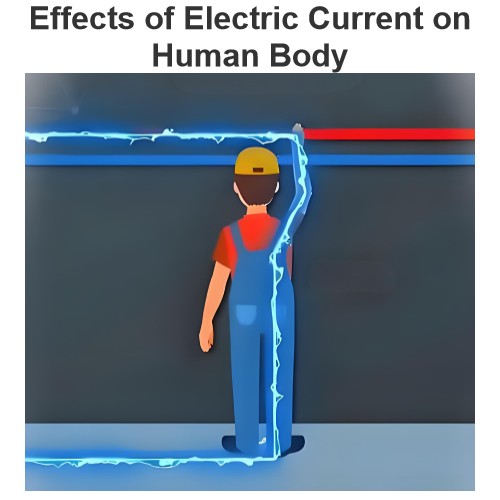What factors contribute to some people being more prone to getting electrical shocks than others?
Human resistance difference
Skin condition
The skin is an important part of the body's electrical resistance. When the skin is dry, the resistance is relatively large; When the skin is wet, the resistance decreases significantly. For example, in the case of heavy sweating or water stains on the skin surface (such as recently washed hands did not dry), the human resistance may be reduced from thousands of ohms when dry to hundreds of ohms or even lower. This is because moisture dissolves electrolytes on the surface of the skin, creating conductive pathways that allow electricity to pass through the body more easily, increasing the likelihood of electrocution.
Skin thickness and integrity
People with thinner skin are more likely to get electrocuted. For example, children have thinner skin than adults, and their skin resistance is relatively low. In addition, if the skin is broken (such as cuts, bruises, etc.), the current will more easily enter the body through the wound, because the resistance of the damaged area is much lower than that of intact skin. The wound may have directly exposed subcutaneous tissue and blood, which conduct electricity better than skin and provide an easier route for current.
Internal physiological factors of the body
Body water content
The water content of different tissues in human body is different, and the tissue with high water content has better electrical conductivity. For example, muscle tissue has a high water content, while adipose tissue has a relatively low water content. People with a higher proportion of muscles in the body may have relatively good overall electrical conductivity and are more likely to have an electric current pass through the body when exposed to the same voltage. In addition, the body's water content can also be affected by age, health conditions and other factors.
The water content of the body of the elderly is lower than that of the young, and the risk of electric shock will be reduced to a certain extent, but due to the combined effect of other factors (such as dry skin, slow reaction, etc.), there is still a risk of electric shock.
Electrolyte balance
Electrolytes in body fluids (such as sodium, potassium, chlorine plasma) have an important effect on current conduction. If the electrolyte balance in the body is out of balance, for example under certain diseases (such as abnormal electrolyte excretion due to kidney disease) or special physiological conditions (such as electrolyte loss due to excessive sweating after strenuous exercise), the body's electrical conductivity may change. Changes in electrolyte concentrations may affect the excitability of nerve and muscle cells, which in turn affects the body's sensitivity to electric currents, making a difference in the risks and consequences of electrocution.
Environmental factor
Ground condition
The risk of electrocution is greatly increased if a person stands on wet ground, such as a water-stained floor, wet dirt or metal floor. The wet ground can be regarded as a conductor, and when the body touches the charged body, the current flows through the body to the ground to form a loop. When standing on a wet floor, the body is connected to a better grounding path than when standing on a dry wooden floor or an insulating rubber mat, making electrocution more likely.
Surrounding electric and magnetic fields
In some environments with strong electric or magnetic fields, such as near a high-voltage substation or around a large electric motor, the human body may be induced to become charged. When the human body is induced to be charged, if it comes into contact with other grounded objects or low-potential objects, electric shock may occur. For example, in a high-voltage substation, due to the strong electric field, the human body may sense a charge, at this time if you accidentally contact the grounding metal structure in the station, there will be current through the human body into the earth, causing electric shock. In this case, people who work or operate in a strong electric or magnetic field environment are more likely to be electrocuted than people in ordinary environments.
Work and living habits
Occupational contact
People in certain occupations have greater access to electrical equipment, which increases the risk of electric shock. For example, electricians often need to install, overhaul and maintain electrical lines, and have more opportunities to contact live bodies; There are also workers who work in electronic equipment manufacturing workshops, who also have frequent contact with electrical components and circuits during operation. If these personnel do not strictly abide by the safety operation procedures in the work, such as the correct use of insulation tools, do not wear protective equipment, it is easy to occur electric shock accidents.
Habits of using appliances
In daily life, some bad electricity habits will increase the possibility of electric shock. For example, using wet hands to plug or unplug electrical appliances, this situation will reduce the insulation resistance between the human body and the electrical appliances, making it easier for current to pass through the human body; There is also excessive pulling of the wire when using electrical appliances, which may cause the insulation layer of the wire to be damaged, thus exposing the internal live wire and increasing the risk of electric shock.
The Electricity Encyclopedia is dedicated to accelerating the dissemination and application of electricity knowledge and adding impetus to the development and innovation of the electricity industry.













